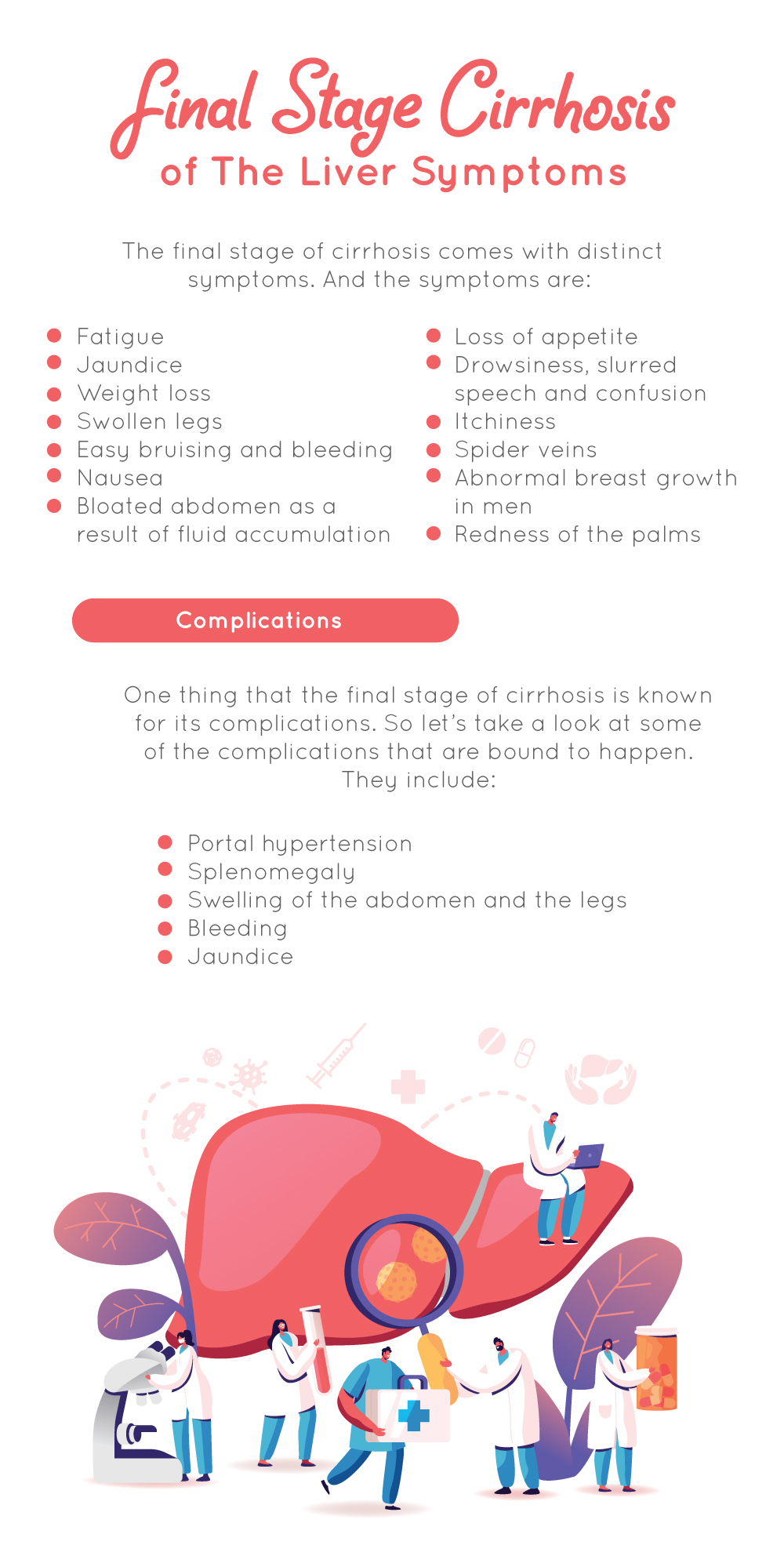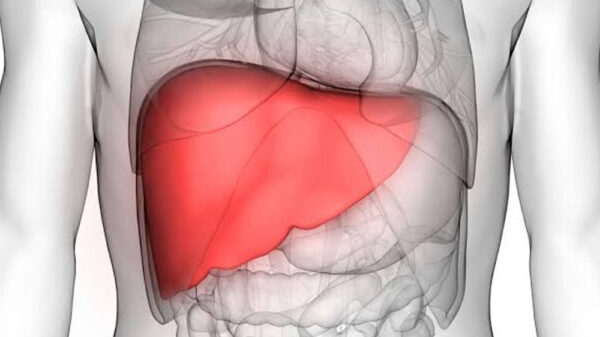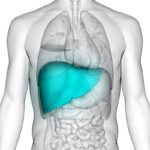 It’s interesting that there are different stages of liver cirrhosis. And these different stages actually come with unique features. Let’s take a look at the progression of liver cirrhosis. At first, there is the inflammation of the liver. And this causes scars to form. If found out at this stage it can still be handled. But it proceeds to complete scarring and there are other complications there is little that can be done. This is what is known as the final stage of liver cirrhosis. You must know that when it’s at the final stage it would come with some specific symptoms. And these symptoms would be indicative of the fact that it’s already in the final stage. That’s why we will be taking a look at the final stage cirrhosis of the liver symptoms.
It’s interesting that there are different stages of liver cirrhosis. And these different stages actually come with unique features. Let’s take a look at the progression of liver cirrhosis. At first, there is the inflammation of the liver. And this causes scars to form. If found out at this stage it can still be handled. But it proceeds to complete scarring and there are other complications there is little that can be done. This is what is known as the final stage of liver cirrhosis. You must know that when it’s at the final stage it would come with some specific symptoms. And these symptoms would be indicative of the fact that it’s already in the final stage. That’s why we will be taking a look at the final stage cirrhosis of the liver symptoms.
At the very first stage of liver cirrhosis, there would be mild symptoms. These symptoms would give you a sign that something is wrong with the body. But at this stage, the symptoms aren’t so alarming. And that’s why people tend to ignore it. The same goes for the second stage. The symptoms present in this stage are mild. But from the third stage, the symptoms increase. And by the time it’s in the last stage there is a blow-out of the symptoms. And this is very alarming. It’s at this stage that some people run to the hospital. The sad thing though is that at this stage there is very little that can be done.
Final Stage Cirrhosis of The Liver Symptoms
People with stage 3 and stage 4 cirrhosis have decompensated cirrhosis. This is a term that doctors use to describe the complications that come with later stages of cirrhosis. At this stage, the liver isn’t functioning properly. And it is heading towards liver failure. People with cirrhosis at these stages are known to need a liver transplant.
The final stage of cirrhosis comes with distinct symptoms. And that’s because, at the early stages, there is very little or no symptoms at all. So when these symptoms start you surface know that it’s most likely the final stage of cirrhosis. And the symptoms are:
- Fatigue
- Jaundice
- Weight loss
- Swollen legs
- Easy bruising and bleeding
- Nausea
- Bloated abdomen as a result of fluid accumulation
- Loss of appetite
- Drowsiness, slurred speech and confusion
- Itchiness
- Spider veins
- Abnormal breast growth in men
- Redness of the palms
Complications
One thing that the final stage of cirrhosis is known for its complications. So let’s take a look at some of the complications that are bound to happen. They include:
- Portal hypertension: This is high blood pressure in the veins that carry blood supply to the liver. What cirrhosis does is that it causes the slowing down of the normal flow of blood. And with this, there is an increase in the pressure of the vein.
- Splenomegaly: This is an enlargement of the spleen. Actually, portal hypertension is known to cause swelling of the spleen. When this happens, platelets and white blood cells are trapped. And the decrease in white blood cells, as well as platelets, is a sign of cirrhosis.
- Swelling of the abdomen and the legs: When there is increased pressure in the portal veins fluid starts to accumulate. It could accumulate in the legs or in the abdomen. Accumulation of fluid in the leg is known as edema while in the abdomen is known as ascites. This is actually a result of the inability of the liver to produce certain proteins such as albumin.
- Bleeding: Another thing that portal hypertension can cause is bleeding. And that’s because blood is being redirected to the smaller veins in the body. With the extra pressure applied to the smaller veins, there is bursting of the small vessels. And this can lead to serious bleeding.
- Jaundice: This happens when the liver can’t remove bilirubin. Bilirubin is actually a waste product in the body that must be transported to the small intestine. When it is isn’t transported and it starts to accumulate there is jaundice. The eyes and skin become yellow.
Treatment
When it comes to the final stage of cirrhosis, there is very little that can be done as to treatment. That’s because at this stage it is nearly impossible to reverse the situation. The liver is already completely damaged and isn’t functioning as it should. That’s why the best option available is a liver transplant.
So a MELD score is used to check how urgent the liver transplant is. And also if you’re good to have a liver transplant done. A person with at least a symptom amongst the ones listed above with a MELD score if 15 and above should have a transplant.
Usually, liver transplants can either be getting part of the liver or a whole liver. The interesting thing about our liver is that it can regenerate. So if just a part of a person’s liver is transplanted it would grow over time. Both the liver of the donor and the recipient would grow back after some time.
The thing though is that a liver transplant isn’t as easy as it seems. There are a lot of things that must be considered when it comes to a liver transplant. Most times, the first thing the doctor would do is tell you to go to a transplant center. Here they would run some tests on you to know if you’re fit. At the same time, you will be educated as to what the whole process is all about.
Another thing is the waiting list. If you don’t have a live donor you have to be on the waiting list. For some, they would be on the list for a few days. While some would be on the list for months. That’s why we said liver transplant isn’t an easy procedure. You also have to consider the fact that you would have to make some lifestyle changes. So before you delve into doing a liver transplant think about it well.
Finally, make sure you go see a doctor immediately if you notice any of the final stage cirrhosis of the liver symptoms.























